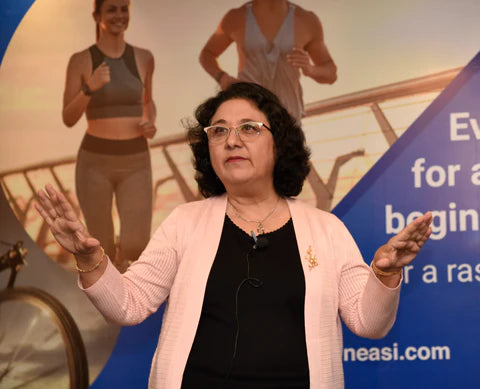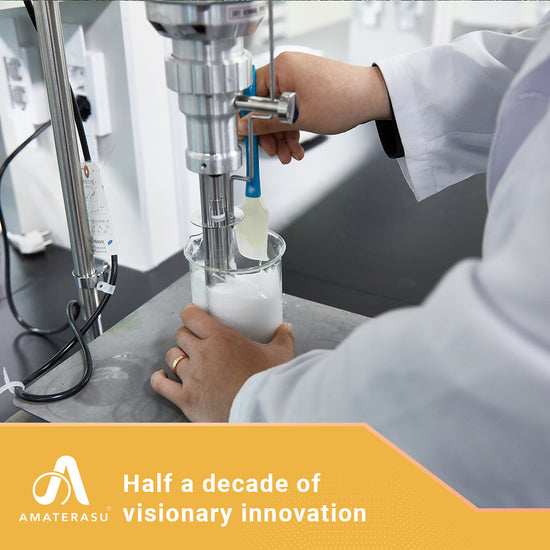THE KNOW HOW
Menstruation is the process of shedding of a woman’s uterus lining during which normal vaginal bleeding occurs as part of a woman’s monthly cycle. A little bit of discomfort and pain during the menstrual period is quite common but sometimes this pain becomes unbearable, resulting in cramps. This excessive pain during menstruation is called Dysmenorrhea.

Menstrual cramps are throbbing, aching cramps you get in your lower belly just before and during your period. They are a common but uncomfortable part of a woman’s monthly menstrual cycle. However, they can vary considerably in intensity, but some women might only experience mild cramps & period rashes, while others might have more severe or even debilitating pain. The majority of women experience varying degrees of period pain, at some point in their lives.
ROOT CAUSE
Menstrual cramp occurs due to a strong contraction in the uterus area during the menstrual cycle and can result in the pressing of nearby blood vessels. This briefly cuts off the oxygen supply to the uterus and lack of oxygen causes pain and cramps.
Apart from this, menstrual cramps can also occur due to –
- ENDOMETRIOSIS - It's a painful condition in which the tissue that lines the uterus (the endometrium), starts growing outside of the uterus.
- PID (Pelvic inflammatory disease) - an infection which is that’s caused by bacteria that starts developing in the uterus and can spread to other reproductive organs.
- FIBROIDS in the uterus – Fibroids are non-cancerous growths in the uterus that could develop during a woman's childbearing years.
- ADENOMYOSIS – It usually occurs when the tissue that lines your uterus grows into a nearby muscle.
- CERVICAL STENOSIS – It’s the narrowing of the lower part of your uterus, and a condition wherein the spinal canal is too small for the spinal cord and nerve roots. This can cause potential damage to the spinal cord.
Menstrual cramp symptoms may include –
- Pain in your hip area, lower back, and inner thigh area.
- Aching pain in your belly, which sometimes is quite severe.
- Upset stomach.
- Feeling of pressure in your belly area.
- Loose stools.
You are at higher risk of getting menstrual cramps if you –
- are under 30 years of age.
- Smoke or consume alcohol.
- have a family history of painful periods.
- have heavy bleeding during periods.
- have irregular periods.
- reached puberty early, at or before the age of 11.
BELIEF OF RELIEF
While menstrual cramps are a common occurrence for most women, some of them aren’t in a position to carry out their day-to-day activities due to the immense pain. Mentioned below are 10 effective and proven remedies and lifestyle changes that can help ease out the pain -
- Exercising - 15-30 minutes of low-intensity physical activity every day releases happy hormones (endorphins) in the body, which elevates your mood and blocks pain receptors in the brain. Exercising regularly improves blood circulation throughout the body and helps to open up the blood vessels. Opt for yoga and breathing exercises and stay clear of high-intensity workouts like running or jogging when in pain.

- Warm Bath - A warm bath or shower helps relieve menstrual cramps as the heat increases blood flow and relaxes the uterus muscles to lessen pain.
- Rest up - Getting sufficient sleep in a comfortable position can do wonders to help ease the pain.
- Heat Therapy - Much like having a warm bath or shower, applying a heated pain relief pad or hot water bag to the lower abdomen area increases blood flow and relaxes the uterus muscles that cause menstrual pain.
- Some relaxation techniques that involve yoga practice, guided meditations, and deep breathing can do wonders too.

- Skip Period or Sanitary Pad Rashes with a good anti-rash Gel like SkinEasi regina. It gives you relief from period rashes keeping you free, relaxed and happy.
- Cutting down on caffeine intake, smoking, and alcohol consumption can help in the long run.
- Cut down on your salt in food. Excess salt intake in your body can cause severe water retention leading to menstrual cramps.
- Keep yourself hydrated with loads of water and avoid consumption of food and drinks that are high in sugar. Load up on fresh fruit juices instead of canned drinks or sugary sodas
- Over counter medications are proven to ease out the pain.
- Herbal teas have anti-inflammatory properties and some varieties like chamomile, peppermint, fennel, or ginger tea are calming to the body and ease out menstrual pain.

THE BOTTOMLINE
If you still have painful periods despite having tried all the above-mentioned treatments and lifestyle changes, a doctor will be able to prescribe stronger treatments for relief of menstrual cramps.





